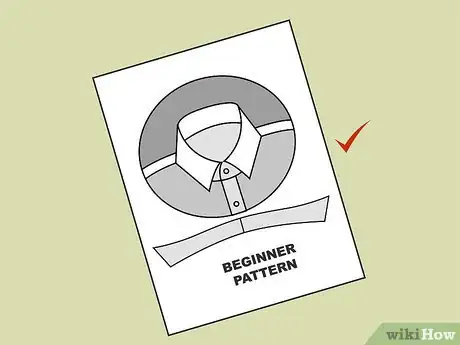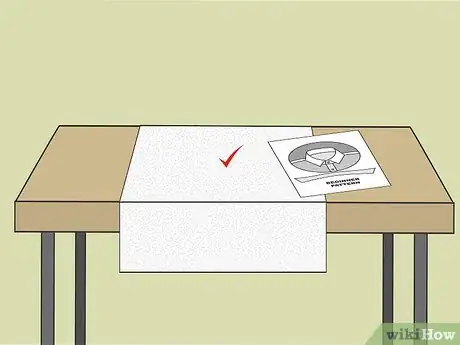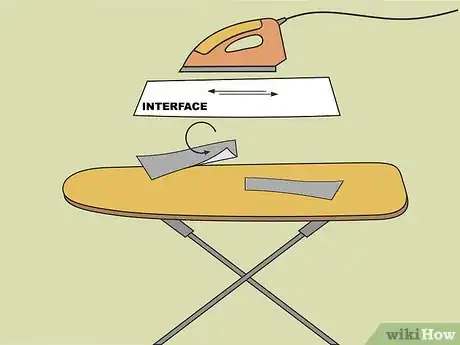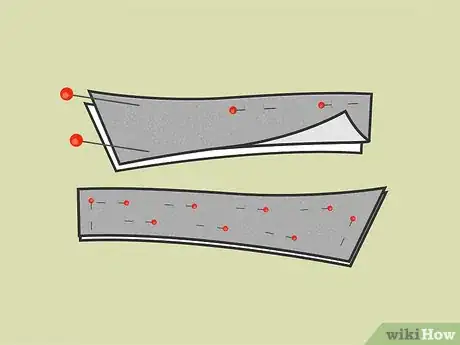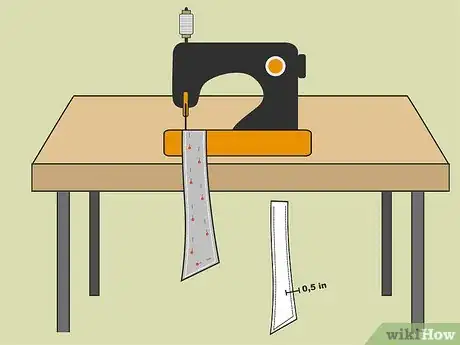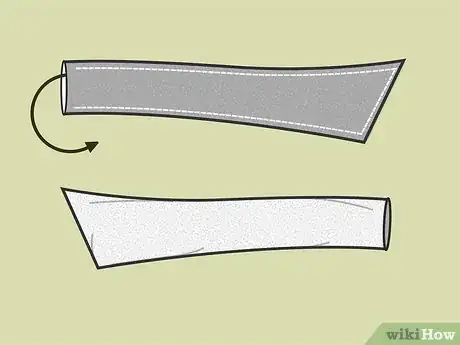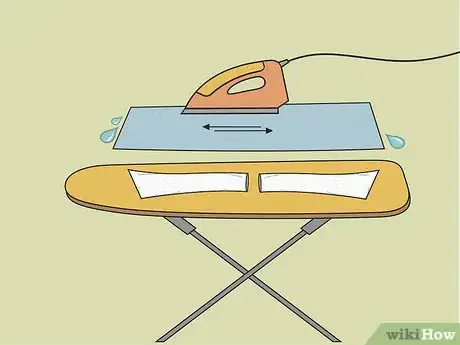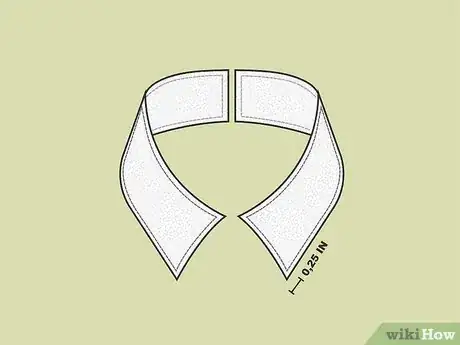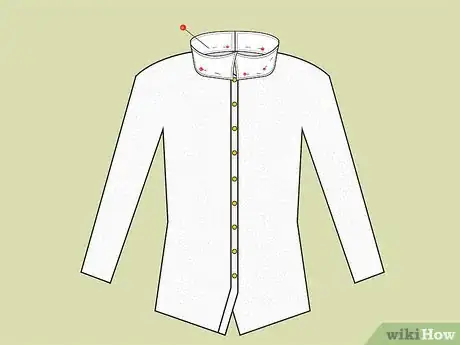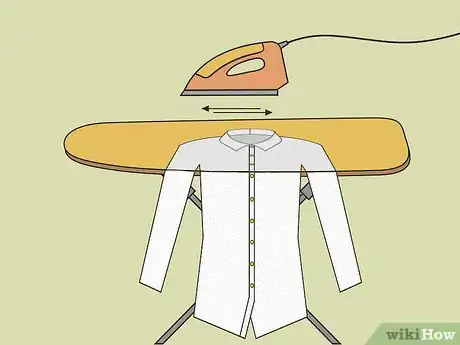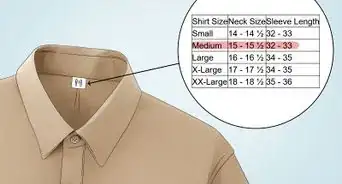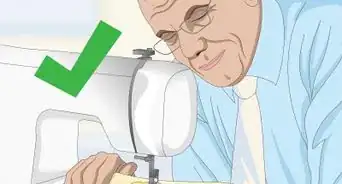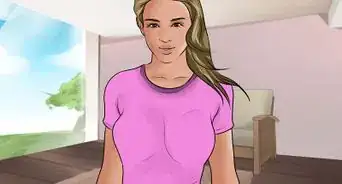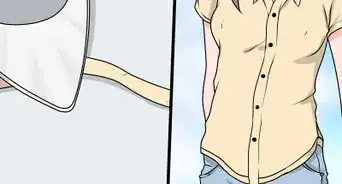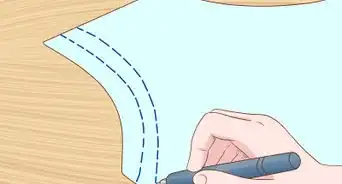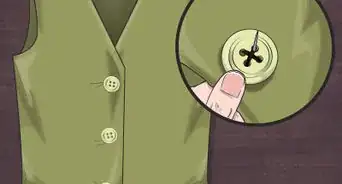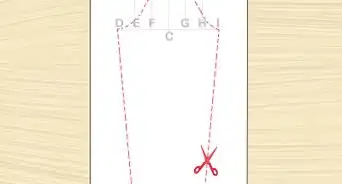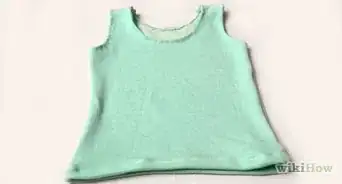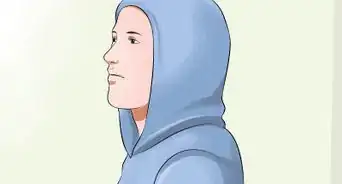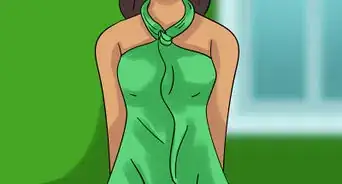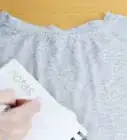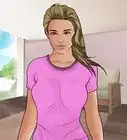This article was co-authored by Korri Burton-Universe. Korri Burton-Universe is a Professional Tailor and the Owner of Uncommon Closet, a custom clothing and tailor resource for the LGBTQIA+ community and those with body types often overlooked by major clothing chains and shops. Korri specializes in custom clothing, tailoring services, and wedding clothes for people of all identities, genders, races, and sizes. Uncommon Closet creates a safe space for people to find or make outfits that make them feel safe and powerful.
There are 14 references cited in this article, which can be found at the bottom of the page.
This article has been viewed 53,696 times.
Adding a collar onto a shirt can be tricky, whether you are new to sewing or a sewing veteran. However, there are some easy ways to simplify the process. Start with a pattern and follow the instructions carefully. Then, sew the collar pieces together and attach your collar to the neckline of your shirt.
Steps
Cutting out the Collar Pieces
-
1Choose a pattern in the desired style. Collars come in different shapes and sizes, and they are usually integrated into the design of a shirt or dress rather than added on later. To get the best results, work from a sewing pattern that includes a collar in the design and follow the pattern’s instructions for how to cut, sew, and attach the collar.[1]
- For example, you could go with a collar that has long, pointed lapels, or opt for a curved collar for something more delicate.
Tip: If you are new to sewing collars, choose a pattern labeled “easy” or “beginner.” Avoid "intermediate" and "advanced" patterns since these will be much more complicated.
-
2Select the fabric you want to use for the collar. Your sewing pattern should indicate what type of fabric you will need for the collar and specify if a special type of fabric is recommended. However, you can choose the color of the fabric that you want to make your collar. Use the same color fabric as the rest of the shirt if you want the collar to blend in, or opt for a contrasting color for a collar that will stand out.[2]
- For example, if you are making a white shirt you could choose the same color fabric and make a white collar, or choose red fabric for a collar that will stand out.
- Make sure to pre-wash and dry your fabric for the collar. Otherwise, the fabric might shrink after you wash the shirt for the first time, and this could cause your shirt to become misshapen.
Advertisement -
3Use the paper pattern included with your pattern to cut out the collar pieces. Cut out the paper pattern pieces that you will need to make your collar. Then, fold your fabric in half and smooth it out. Lay the paper pieces on your fabric and pin them in place. Cut the fabric along the edges of the paper pattern pieces using a pair of sharp fabric scissors. Then, place the paper pattern on your interfacing and cut out 1 piece of interfacing for the collar.[3]
- Be sure to cut around any notches that are included in the pattern pieces. These will help you line up the collar with the neckline later on.
- Go slowly and make sure not to create any jagged edges in the fabric.
-
4Iron interfacing onto the wrong side of 1 collar piece. After you finish cutting out the fabric pattern pieces, place 1 of the collar pieces wrong wide up on a flat surface, such as an ironing board or a towel on a countertop. Then, place the interfacing on top of the fabric piece. Lay the interfacing so that the adhesive side is facing down. Place a towel or t-shirt over the interfacing and iron over the interfacing and fabric to connect them.[4]
- Check the instructions included with the interfacing to determine if you need to do anything special. For example, you might need to press on the interfacing and fabric for 5 seconds to ensure that they are connected.
Sewing the Collar Together
-
1Pin the collar pieces so that the right sides are facing each other. Lay the collar piece with the interfacing attached to it so that the right (print or outer) side is facing up. Then, position the other collar piece on top of that one with the right side facing up. Line up the edges of the 2 pieces so that they are even and then pin them along the short edges and 1 of the long edges.[5]
- If 1 of the long edges has notches in it, then leave that edge unpinned. You will need to line up this side of the collar with the neckline, so it is important for the notches to remain visible.
Tip: Always insert pins perpendicular to the edges of your fabric. This makes it easier to remove them as you sew.[6]
-
2Sew a straight stitch 0.5 in (1.3 cm) from the raw edges on 3 sides. Take the pinned collar pieces to your sewing machine and start sewing along the first short edge. Sew all the way around the collar until you get to the other pinned edge. Then, remove the collar from the sewing machine and cut the excess threads.[7]
- Pull out the pins 1 at a time before you sew over a pinned area. Do not sew over the pins! This may damage your sewing machine.
- If desired, you can use a zigzag stitch instead of a straight stitch. This may provide some extra security along the seam.[8]
-
3Trim the fabric around the outside of the stitches. After the 2 collar pieces are attached, use a pair of fabric scissors to trim around the outside of the stitches. Cut away the excess fabric at the corners of the collar and cut a few notches into the fabric along the long edges to make it easier to push out the fabric and press the collar.[9]
- Be careful not to cut into the stitches or you may ruin the collar. Cut the fabric about 0.25 in (0.64 cm) from the stitches.
-
4Invert the collar pieces and push out the fabric at the corners. After you have removed some of the excess fabric, use your finger to turn the collar right-side out. Then, reach into the collar and press around the edges with your fingers.[10]
- You can also use the eraser end of a pencil to press out the fabric. This may be especially helpful for pressing out the fabric in the corners of the collar.
- Don’t press too hard or you may rip the seam!
-
5Press the collar with an iron to make it flat and crisp. Lay the collar on a flat surface, such as an ironing board or a towel on a countertop. Then, iron it with the iron on its lowest setting. Run the iron back and forth across the collar until it is flat and neat.[11] [12]
- If the fabric is delicate, you may want to place a t-shirt or towel over it before you iron it.
-
6Add an edge stitch to the outside of the collar if desired. Edge stitching the collar is optional, but it can make the collar look more finished and help it to hold its shape. Sew a straight stitch about 0.25 in (0.64 cm) from the secured edges of the collar.[13]
- Do not sew the edge stitch along the side of the collar you left open.
Attaching the Collar to a Shirt
-
1Pin the collar to the shirt’s neckline. Line up the edges of the collar and the neckline of the shirt so that the right sides of both pieces are together. Make sure to match up any notches in the collar and neckline. These will help to ensure that the collar is centered before you sew. Insert a pin every 2 to 3 in (5.1 to 7.6 cm) along the collar.[14]
- If there are no notches, then do your best to center the collar on the neckline.
-
2Sew a straight stitch along the raw edges of the collar and neckline. After you finish pinning the collar in place, take the shirt and collar to your sewing machine and sew a straight stitch along the raw edges. Position the stitch about 0.5 in (1.3 cm) from the raw edges of the collar and neckline.[15]
- You may want to sew across the neckline 2 times for extra security.
- Cut off any loose threads after you finish sewing the collar into the neckline.
-
3Fold the top edge of the collar over and press it with an iron. After you finish sewing the collar onto the neckline, you may want to press it along the desired fold. This will help to ensure that the collar lays how you want it to when you wear the shirt. Fold the collar where you want it to be folded (usually around the middle or near the seam), and then iron along the fold.[16]
- Place a t-shirt or towel over the folded collar if the fabric is delicate.
Tip: For an extra stiff collar, spray it with starch! You can find starch spray in the laundry aisle at your local grocery store.
Expert Q&A
-
QuestionHow can I make my collar lay flat?
 Korri Burton-UniverseKorri Burton-Universe is a Professional Tailor and the Owner of Uncommon Closet, a custom clothing and tailor resource for the LGBTQIA+ community and those with body types often overlooked by major clothing chains and shops. Korri specializes in custom clothing, tailoring services, and wedding clothes for people of all identities, genders, races, and sizes. Uncommon Closet creates a safe space for people to find or make outfits that make them feel safe and powerful.
Korri Burton-UniverseKorri Burton-Universe is a Professional Tailor and the Owner of Uncommon Closet, a custom clothing and tailor resource for the LGBTQIA+ community and those with body types often overlooked by major clothing chains and shops. Korri specializes in custom clothing, tailoring services, and wedding clothes for people of all identities, genders, races, and sizes. Uncommon Closet creates a safe space for people to find or make outfits that make them feel safe and powerful.
Professional Tailor Make sure you press the collar with an iron to help it lay flat and form a nice point.
Make sure you press the collar with an iron to help it lay flat and form a nice point.
Things You’ll Need
- Pattern
- Fabric
- Fusible interfacing
- Iron
- Scissors
- Pins
- Sewing machine
- Thread
References
- ↑ https://www.youtube.com/watch?v=dO1x76OceMo&feature=youtu.be&t=15
- ↑ https://www.youtube.com/watch?v=dO1x76OceMo&feature=youtu.be&t=15
- ↑ https://www.youtube.com/watch?v=dO1x76OceMo&feature=youtu.be&t=29
- ↑ https://www.youtube.com/watch?v=dO1x76OceMo&feature=youtu.be&t=55
- ↑ https://www.youtube.com/watch?v=dO1x76OceMo&feature=youtu.be&t=110
- ↑ https://www.threadsmagazine.com/2012/01/30/how-to-use-pins-the-right-way
- ↑ https://www.youtube.com/watch?v=dO1x76OceMo&feature=youtu.be&t=130
- ↑ http://www.nancyzieman.com/blog/sewing-2/absolute-easiest-way-to-sew-collars/
- ↑ https://www.youtube.com/watch?v=dO1x76OceMo&feature=youtu.be&t=195
- ↑ https://www.youtube.com/watch?v=dO1x76OceMo&feature=youtu.be&t=270
- ↑ Korri Burton-Universe. Professional Tailor. Expert Interview. 12 January 2021.
- ↑ http://www.nancyzieman.com/blog/sewing-2/absolute-easiest-way-to-sew-collars/
- ↑ https://www.youtube.com/watch?v=dO1x76OceMo&feature=youtu.be&t=312
- ↑ https://www.youtube.com/watch?v=dO1x76OceMo&feature=youtu.be&t=490
- ↑ https://www.youtube.com/watch?v=dO1x76OceMo&feature=youtu.be&t=525
- ↑ https://www.youtube.com/watch?v=dO1x76OceMo&feature=youtu.be&t=550
